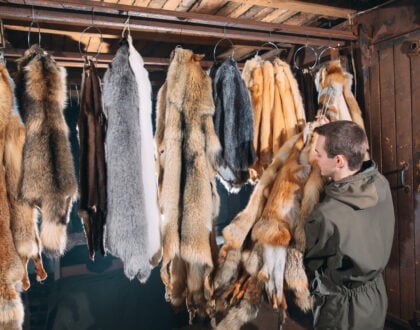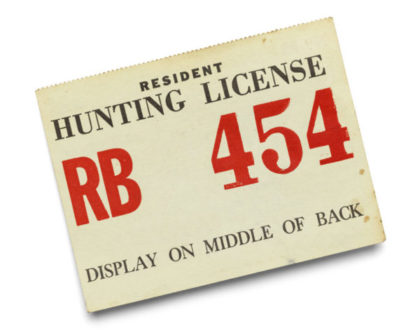Trapping Gear To Get You Started

As a beginner, sometimes it’s hard to figure out what you need to get started in a particular sport or hobby. That’s why we’ve compiled a list of trapping gear to get you started. Most of this gear can be found in most, if not all, trapper’s backpacks (or baskets). Depending on your state, gear may be different based on rules and regulations.
Disclosure: Some of the links below are affiliate links, meaning that at no additional cost to you, I will receive a commission if you click through and make a purchase. For more information, read our full affiliate disclosure here.
Trapper’s Basket or Bucket
Most trappers use a pack basket to carry their equipment, supplies and harvest. If you don’t have a pack basket, you can use a 5 gallon bucket with a tool organizer (like this one), or a pinch a burlap sack can be used.
Whatever pack or basket you use, keep in mind that any foreign odors in these containers could end up on your traps or other equipment.
Foothold Traps
A good trap to start with is a coil spring foothold trap which can be used for fox, marten, mink, muskrat and raccoon. This trap is probably the most universal trap you can have in your bag. You can also find these are garage or estate sales in the summer so keep a lookout.
Stakes or Anchors
Metal stakes and anchors are necessary to secure the trap to ensure your traps don’t run away with your catch. Stakes and anchors are great for trapping everything from raccoon to coyote.
Trowel
A trowel is a must have in every trapper’s bag. Whether you are using a a small trowel to set trap beds or a larger trowel to mimic game holes, both are extremely handy. You can buy a trowel at a trapping supplier, a home improvement store or on Amazon.
Dirt Sifter
A dirt sifter allows you to cover traps and bait with fine soil. The sifter removes rocks or clumps that could keep the trap from closing properly. Sifters can be purchased at most trapping suppliers. This one fits on the top of a 5 gallon bucket for easy use and transportation.
Additionally, you may create your own by using scrap wood and a piece of 1/4″ hardware cloth. Start by building a open box that roughly 10 inches long and 6 inches wide then attach the hardware cloth with staples to the box’s base.
Pliers or Wire Cutters
Useful for many things. Its always good to have a set of nice pliers or wire cutters in your bag. Particularly useful for securing your traps to stakes/anchors. These ones from Klein Tools are perfect; one tool for the job.
Hatchet or Sod Buster
A hatchet that can also be doubled as a hammer (like this one) is extremely useful. Use the hammer side to drive stakes/anchors into the ground and use the hatchet side to break up the ground and roots for the perfect trap placement. There’s also a tool called a sod buster that is made specifically for this task which has a chisel welded on one side of a hammer for easy digging of trap bed.
Catch Pole
While target animals are dispatched, what happens when non-target animals get caught in your trap line? In these situations, a catch pole comes in handy to hold the animals so they can be released safely.
Gloves
A good pair of long, waterproof gloves is a must if you are trapping near water. Gloves also keep human odors from contaminating your traps, stakes and bait. A good pair of animal handling gloves is also a good idea so you can safely handle the release of a non-target animal.
Hunting License
Having your hunting and trapping license in your gear pack, or on your person, is required anytime you are in the field. I suggest finding a weatherproof holder for your license.



[…] your hunting and trapping license in your gear pack, or on your person, is required anytime you are in the field. I suggest finding a […]
[…] 2020 Michigan Fur Harvester license is valid from May 1, 2020 to April 30, 2021. See our post on Michigan Fur Harvester License for more information. Also for updated Rules and Regulations, see the Michigan Fur Harvester Digest […]
[…] ensure you have your hunting and trapping license in your gear pack, or on your person, as its required anytime you are in the field. I suggest […]